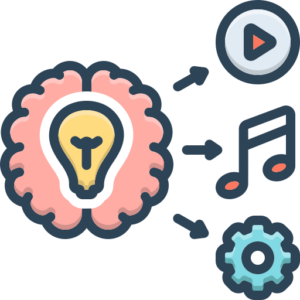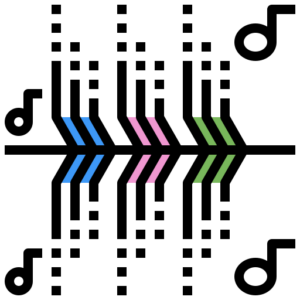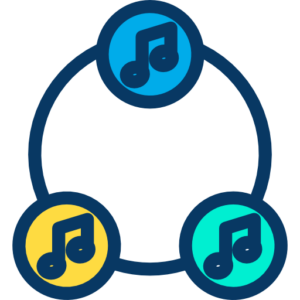Introduction: The Silence of the DAW
Every electronic music producer, from the bedroom beginner to the seasoned professional headlining festivals, encounters it: the dreaded creative block. It’s that frustrating state where the Digital Audio Workstation (DAW) screen feels like a vast, empty void, the monitors remain silent, inspiration seems to have evaporated, and every idea feels stale or unworkable. This isn’t a sign of failure or a lack of talent; it’s a common, almost inevitable part of the creative process, particularly in a field as technically demanding and sonically open-ended as electronic music. Understanding the nature of these blocks, identifying their triggers, and equipping yourself with a toolkit of strategies is crucial not just for finishing tracks, but for maintaining long-term creative health and enjoyment in your musical journey. This chapter delves deep into the phenomenon of creative blocks specifically within the electronic music context and provides actionable techniques to break through them and reignite your artistic spark.

1. Understanding the Anatomy of a Creative Block
Before tackling the block, it’s essential to understand why it might be happening. Creative blocks in electronic music often stem from a confluence of factors:
- 1.1. Technical Overwhelm:
- The Paradox of Choice: The sheer number of plugins, samples, synths, and techniques available can be paralyzing. You might spend hours auditioning kick drums or tweaking a synth patch without ever laying down a core idea.
- Skill Gaps: Feeling inadequate in areas like music theory, sound design, mixing, or arrangement can lead to hesitation and frustration, preventing you from translating ideas into reality.
- 1.2. Psychological Hurdles:
- Perfectionism: The desire to make everything sound “perfect” from the outset can stop you from even starting. You might discard ideas prematurely because they don’t immediately match the polished sound in your head or your reference tracks.
- Fear of Failure/Judgment: Worrying that your music won’t be good enough, won’t connect with listeners, or will be criticized can stifle experimentation and risk-taking.
- Comparison: Constantly comparing your work-in-progress to finished, mastered tracks by your favorite artists is an unfair fight that can lead to discouragement.
- 1.3. Lack of Inspiration or Direction:
- Running Dry: Sometimes, the well of ideas simply feels empty. You might lack a starting concept, melodic fragment, or rhythmic pattern to build upon.
- Routine Stagnation: Doing the same things in the same way every time you open your DAW can lead to predictable and uninspiring results. Your process itself becomes a barrier.
- 1.4. Burnout and Fatigue:
- Overtaxing Your Ears and Mind: Long, consecutive hours in the studio, especially dealing with complex technical details or loud volumes, can lead to ear fatigue and mental exhaustion, diminishing creative capacity.
- Life Stressors: External pressures from work, relationships, or finances can significantly impact your creative energy and focus.
2. Strategies for Demolishing the Wall
Recognizing the potential cause is the first step. The next is implementing targeted strategies. Not every technique will work every time, so building a diverse toolkit is key.
- 2.1. Shift Your Mindset:
- Embrace the “Sketch” Mentality: Give yourself permission to create badly. Focus on getting ideas down quickly without judgment. Think of early track versions as rough sketches, not final masterpieces. Quantity can sometimes lead to quality. Finish something, even if it’s simple or flawed.
- Set Micro-Goals: Instead of “finish a track,” aim for smaller, achievable targets: “create a 4-bar drum loop,” “design one interesting bass patch,” “write a simple chord progression,” “experiment with a new effect for 30 minutes.” Small wins build momentum.
- Focus on the Process, Not the Outcome: Detach from the need for every session to result in a finished product. Enjoy the act of exploration, sound design, or learning a new technique. The journey is as important as the destination.
- Reframe “Failure”: See discarded ideas or unfinished projects not as failures, but as necessary steps in the learning and creative process. Analyze why something didn’t work – it’s valuable data for the future.
- 2.2. Alter Your Creative Process:
- Start Differently: If you always start with drums, try starting with an atmospheric pad, a melodic hook, a vocal sample, or by designing a unique sound first. Change the initial point of entry into your track.
- Impose Strict Limitations: Constraints can breed creativity.
- Time Limit: Try the “Pomodoro Technique” (work intensely for 25 minutes, then take a 5-minute break) or give yourself only one hour to develop a core idea.
- Tool Limit: Create a track using only stock plugins, a single synth, a specific sample pack, or a limited number of tracks (e.g., 8 tracks maximum). This forces you to be resourceful.
- Conceptual Limit: Decide on a specific theme, mood, or sonic palette beforehand (e.g., “create a track using only metallic sounds,” “write a piece inspired by a rainy night”).
- Collaborate: Working with another producer can inject fresh perspectives, skills, and energy. Bouncing ideas off someone else can quickly break stagnation. Platforms like Splice Community or dedicated Discord servers can facilitate remote collaborations.
- Remix or Cover: Deconstruct and reinterpret a track you admire, or even one of your own older tracks. This provides a structure to work within while allowing creative freedom in sound design, arrangement, and groove.
- Template Time: Revisit your DAW template. Is it serving you, or boxing you in? Try building a new, minimal template, or perhaps a genre-specific one designed to spark ideas differently.
- 2.3. Seek External Stimuli and Inspiration:
- Active Listening (Beyond Your Genre): Don’t just listen to music, analyze it. Pay attention to arrangement, sound choices, transitions, mix balance, and rhythmic variations in genres you don’t normally produce. How does a film score build tension? What makes a funk track groove so well? How does ambient music create space?
- Engage with Other Art Forms: Inspiration can come from anywhere. Visit an art gallery, watch a thought-provoking film, read a book, explore photography. Pay attention to mood, texture, color, and structure – these concepts translate surprisingly well to music.
- Learn Something New: Dive into a specific area you feel weak in.
- Music Theory: Understand scales, chords, and harmony better (even basic knowledge helps).
- New Plugin/Synth: Dedicate time to mastering a complex synth like Serum (https://xferrecords.com/products/serum), Massive X (https://www.native-instruments.com/en/products/komplete/synths/massive-x/), or Pigments (https://www.arturia.com/products/software-instruments/pigments/overview).
- Mixing/Mastering Technique: Watch tutorials on specific techniques (e.g., sidechain compression, mid-side EQ).
- Use Creative Prompts & Challenges: Participate in online challenges (like KVR Developer Challenge, or community challenges on platforms like Reddit r/edmproduction) or give yourself a prompt (e.g., “make a track using only sounds recorded in your kitchen,” “create a beat using a specific BPM and key”).
- Explore Sample Packs and Presets (Strategically): While relying solely on presets can be a crutch, Browse well-curated sample packs (like those on Splice or Loopcloud) or synth presets can provide an instant starting point or spark an unexpected idea. Use them as fuel, then modify and make them your own.
- 2.4. Leverage Technology (Intelligently):
- Generative and Algorithmic Tools: Explore tools that can generate musical ideas, often based on parameters you set. This could be built-in DAW features (like Ableton Live’s MIDI effects – https://www.ableton.com/en/live/) or dedicated plugins. Tools within Bitwig Studio’s Grid (https://www.bitwig.com/) or plugins like Scaler 2 (https://www.pluginboutique.com/products/5831-Scaler-2) for chord progressions, or Captain Chords Epic (https://mixedinkey.com/captain-plugins/) can offer harmonic starting points. Use these not as replacements for creativity, but as collaborators or idea starters.
- Randomizers: Many synths and effects have randomization features. Use them (judiciously) on synth parameters, effect settings, or even note patterns to generate unexpected results that might lead you down a new path.
- Dedicated Sound Design Sessions: Instead of trying to do sound design while writing, set aside separate sessions purely for creating interesting sounds, patches, and textures. Save these creations – they become your unique palette for future tracks.
- Reference Tracks: Use reference tracks not for direct comparison (which can be discouraging), but for analysis. How is the track structured? When do elements come in and out? How loud is the kick relative to the bass? How is tension built and released? Use them as guides for arrangement and mixing decisions.
- 2.5. Prioritize Rest and Self-Care:
- Take Regular Breaks: Step away from the screen frequently during sessions (e.g., every 45-60 minutes). Even a 5-10 minute break to walk around, stretch, or get fresh air can reset your ears and mind.
- Schedule Longer Breaks: If you’re feeling truly stuck or burnt out, take a day or even a few days completely off from music production. Engage in other activities you enjoy. Distance often provides perspective.
- Physical Activity: Exercise is a proven mood booster and stress reliever. It gets blood flowing to the brain and can help break mental loops.
- Mindfulness and Meditation: Practices like meditation can help quiet mental chatter, reduce anxiety, and improve focus – all beneficial for creativity.
- Ensure Basic Needs: Don’t underestimate the impact of adequate sleep, proper nutrition, and hydration on your cognitive function and creative energy.
3. Building Resilience: Preventing Future Blocks
While blocks are sometimes unavoidable, you can cultivate habits that make them less frequent and less severe:
- Maintain a Sustainable Routine: Avoid binge-working. Consistency, even in shorter bursts, is often more productive and less prone to burnout than infrequent marathon sessions.
- Cultivate Diverse Interests: Having hobbies and interests outside of music provides alternative sources of satisfaction and inspiration, taking the pressure off music as your sole creative outlet.
- Build an “Idea Bank”: Always be capturing snippets – a melody hummed into your phone, a cool rhythmic pattern tapped out, an interesting synth patch you stumbled upon, a field recording. Save these fragments without judgment. When you feel blocked, browse your idea bank for a spark.
- Embrace Continuous Learning: Stay curious. Regularly exploring new techniques, tools, or genres keeps your skills sharp and your perspective fresh.
- Connect with a Community: Engage with fellow producers online or in person. Sharing work (even unfinished), discussing challenges, and getting feedback can be incredibly motivating and insightful.
Conclusion: The Block is Temporary, Creativity is Resilient
Creative blocks are not roadblocks; they are detours. They signal a need for change – in perspective, process, or self-care. By understanding the potential causes within the specific context of electronic music production and equipping yourself with a diverse range of strategies, you can learn to navigate these challenging periods effectively. Remember that frustration is part of the process, experimentation is key, and stepping away is often as productive as pushing through. Treat yourself with the same patience and curiosity you apply to exploring a new synthesizer. The silence of the DAW is temporary; your creative voice is resilient and waiting to be rediscovered. Keep experimenting, keep learning, and most importantly, keep creating.



